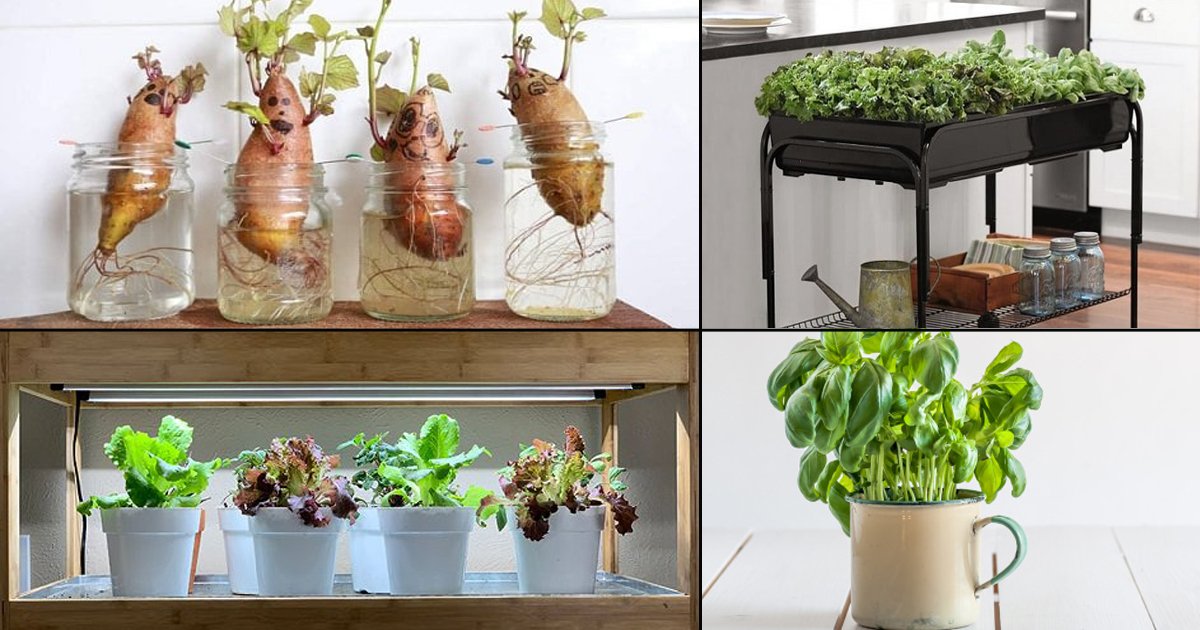How to Grow Lettuce Indoors All Year Round

Imagine having a fresh, crisp salad every day, regardless of the season. Growing lettuce indoors all year round can make this dream a reality. Whether you're a seasoned gardener or a novice, indoor vegetable gardening offers a rewarding experience that brings the outdoors in. Let's dive into the world of all-season gardening and discover the secrets to growing lettuce indoors successfully.
Why Grow Lettuce Indoors?
Growing lettuce indoors provides numerous benefits. You can enjoy fresh, pesticide-free greens anytime, reduce your carbon footprint, and save money on grocery bills. Plus, indoor plant care can be a therapeutic hobby that adds a touch of nature to your home.
Getting Started: Essential Tools and Materials
Before you embark on your indoor gardening adventure, you'll need a few essential tools and materials:
- Seeds: Choose lettuce varieties that are well-suited for indoor growing, such as loose-leaf or butterhead lettuce.
- Containers: Use shallow pots or trays with good drainage.
- Soil: Opt for a well-draining potting mix designed for indoor plants.
- Light: Lettuce needs plenty of light. Consider using grow lights if natural light is insufficient.
- Water: A watering can or spray bottle will help you keep your lettuce hydrated.
Choosing the Right Lettuce Varieties
Not all lettuce varieties are created equal when it comes to indoor growing. Loose-leaf lettuces like 'Black Seeded Simpson' and 'Red Sails' are excellent choices for their quick growth and compact size. Butterhead lettuces, such as 'Buttercrunch,' are also popular for their tender leaves.
Setting Up Your Indoor Garden
Location and Lighting
Choosing the right location is crucial for successful indoor vegetable gardening. Lettuce thrives in bright, indirect light. A south-facing window is ideal, but you can also use grow lights to supplement natural light. Aim for 12-16 hours of light per day.
Temperature and Humidity
Lettuce prefers cooler temperatures, ideally between 60-70°F (15-21°C). Avoid placing your plants near heat sources or drafty areas. Maintaining a consistent humidity level is also important. You can use a humidifier or place a tray of water near your plants to increase humidity.
Planting and Caring for Your Lettuce
Planting Seeds
Fill your containers with potting mix, leaving about an inch of space at the top. Sprinkle lettuce seeds evenly across the surface and lightly cover them with a thin layer of soil. Water gently to ensure the seeds are moist but not waterlogged.
Watering and Fertilizing
Lettuce requires consistent moisture. Water your plants when the top inch of soil feels dry. Use a balanced, water-soluble fertilizer every 2-4 weeks to provide essential nutrients.
Pruning and Harvesting
Lettuce is ready to harvest when the leaves are about 4-6 inches long. You can harvest individual leaves or cut the entire plant at the base. Regular pruning encourages new growth and prevents the plant from bolting (going to seed).
Hydroponic Lettuce: A Modern Approach
For those looking to take their indoor gardening to the next level, hydroponic lettuce is a fantastic option. Hydroponic systems allow you to grow lettuce without soil, using a nutrient-rich water solution. This method can yield faster growth and higher yields.
Setting Up a Hydroponic System
There are various hydroponic systems available, from simple DIY setups to advanced commercial systems. The key components include a reservoir for the nutrient solution, a growing medium (such as rockwool or clay pellets), and a pump to circulate the water.
Maintaining Your Hydroponic System
Regularly monitor the pH and nutrient levels of your hydroponic system. Lettuce prefers a pH range of 6.0-7.0. Change the nutrient solution every 2-3 weeks to prevent the buildup of salts and ensure optimal growth.
Lettuce Growing Tips for Success
- Start Small: Begin with a few plants to get the hang of indoor gardening before expanding your garden.
- Rotate Your Plants: Rotate your containers regularly to ensure even light exposure.
- Monitor for Pests: Keep an eye out for common indoor pests like aphids and spider mites. Use organic pest control methods if necessary.
- Keep It Clean: Maintain a clean growing area to prevent the spread of diseases and pests.
Conclusion
Growing lettuce indoors all year round is a rewarding and enjoyable hobby that brings fresh, nutritious greens to your table. With the right tools, techniques, and a bit of patience, you can create a thriving indoor garden that provides a steady supply of lettuce throughout the year. So, why not give it a try and experience the joy of all-season gardening?
FAQs
What is the best temperature for growing lettuce indoors? Lettuce prefers cooler temperatures, ideally between 60-70°F (15-21°C). Avoid placing your plants near heat sources or drafty areas.
How much light does lettuce need to grow indoors? Lettuce needs plenty of light, ideally 12-16 hours of bright, indirect light per day. You can use grow lights to supplement natural light if necessary.
What are the best lettuce varieties for indoor growing? Loose-leaf lettuces like 'Black Seeded Simpson' and 'Red Sails,' as well as butterhead lettuces like 'Buttercrunch,' are excellent choices for indoor growing.
How often should I water my indoor lettuce plants? Water your lettuce plants when the top inch of soil feels dry. Lettuce requires consistent moisture, so avoid letting the soil dry out completely.
Can I grow lettuce hydroponically? Yes, hydroponic systems are a great way to grow lettuce indoors. They allow for faster growth and higher yields without the need for soil.

:max_bytes(150000):strip_icc()/GettyImages-1211728499-9d9159040aa845f59ddfed810edd2cfc.jpg)
0 Response to "How to Grow Lettuce Indoors All Year Round"
Post a Comment